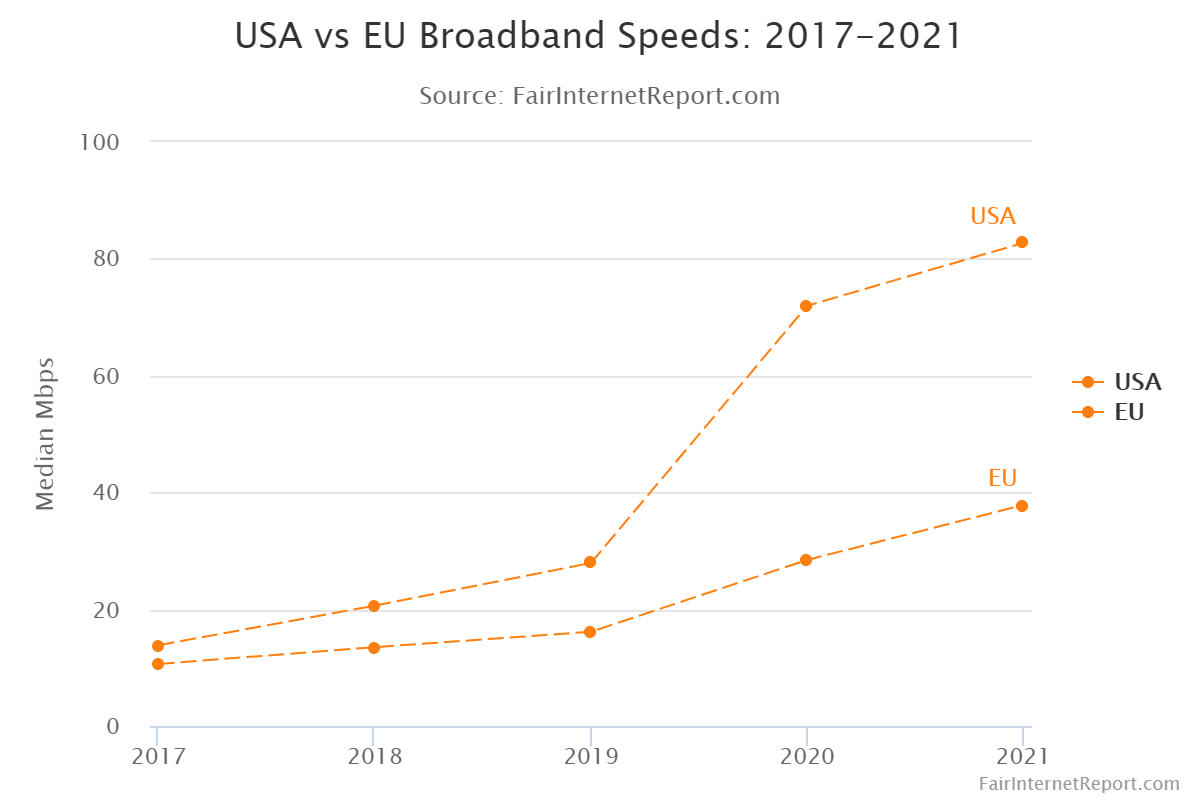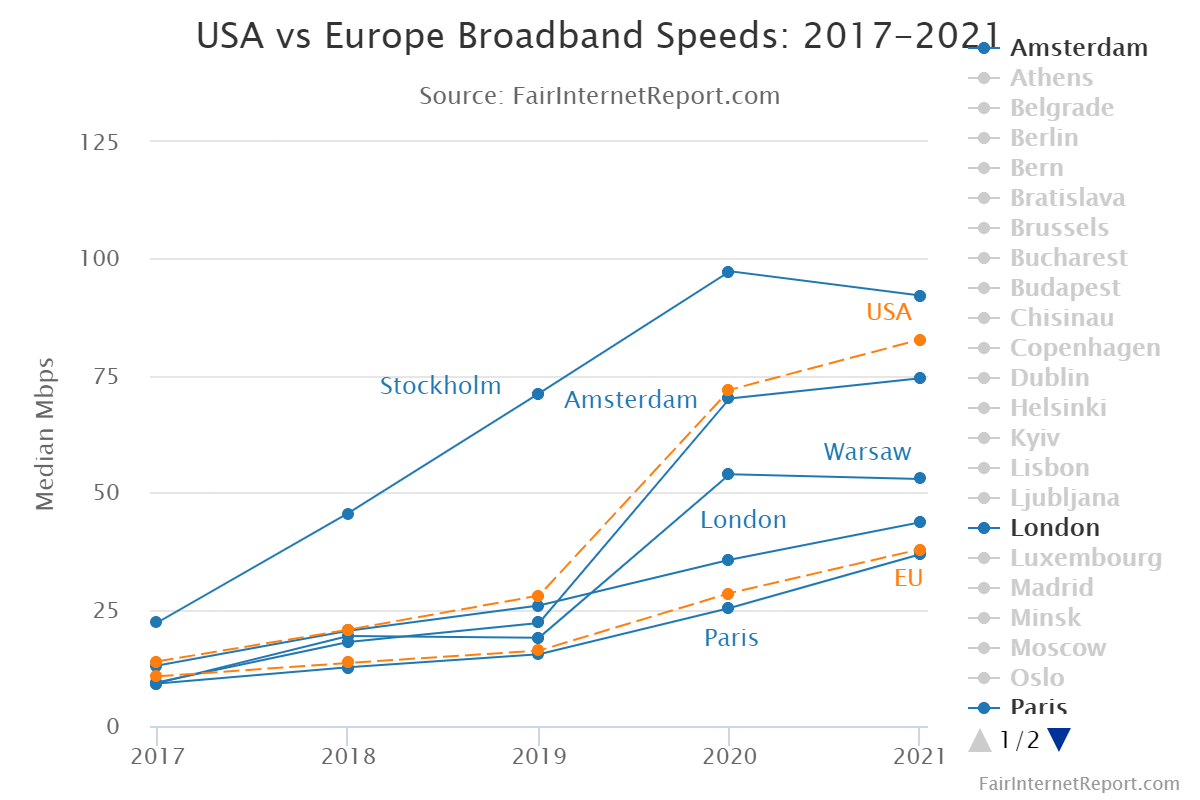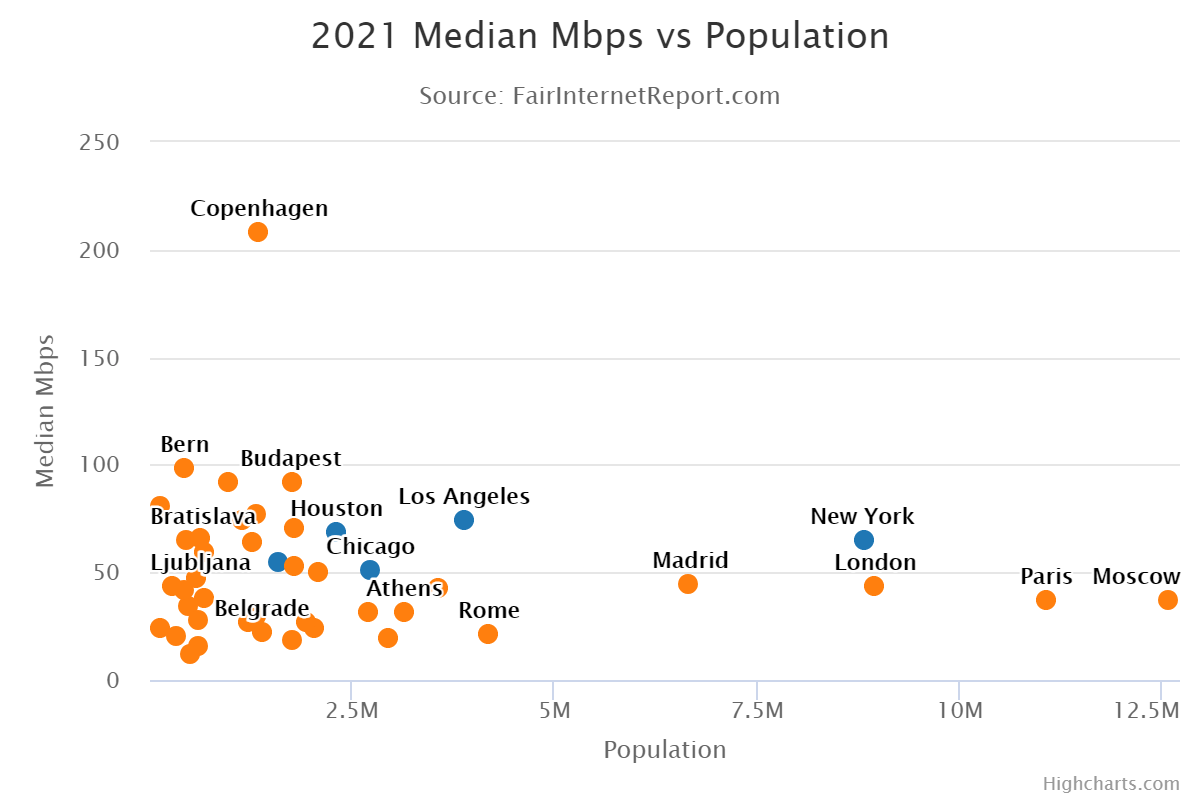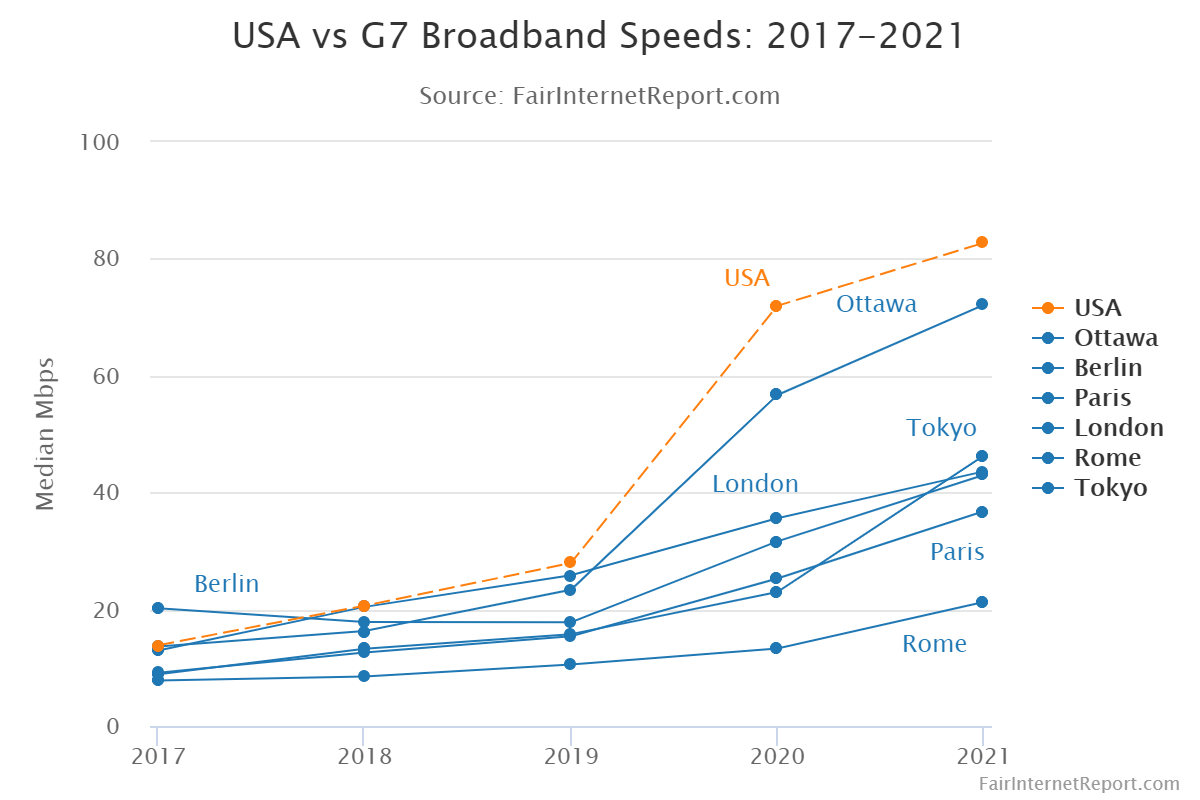Trends
Internet speeds in the US twice as fast as the EU’s in 2021 – Report
Both the United States and the European Union saw median internet speeds rise dramatically in 2020 amid the coronavirus pandemic. Despite this, we’ve found that the increase slowed significantly across the west in 2021. While both the US and EU continued to make gains, the pace of change was more than cut in half in Europe and fell over 90% in the US, signaling that the trend may not be the “new normal.” As it stands, the US still holds a substantial lead over the European Union in median download speeds at 83 Mbps, more than double the EU’s 38 Mbps.

The US and EU have historically taken different approaches to broadband proliferation, with the former broadly pursuing a policy of broadband deregulation, while the EU has taken a more involved regulatory approach.
Internet infrastructure in Europe and the United States is undergoing a generational shift. Although speeds are rising across most of Europe, the US still holds a significant lead in broadband performance.
In our annual analysis of internet speeds across the west, we take a look at how median download speeds a have changed over the past year, and how European countries and the United States stack up against each other. kayseri escort
Key Findings
- Median download speeds in the US were twice as fast as in the EU in 2021.
- Median US download speeds more than quadrupled since 2017, with 2020 recording an explosive growth rate of 157.7% year over year.
- Only four European cities – Copenhagen, Stockholm, Bern, and Budapest – had median download speeds faster than the US nationwide median.
- Despite the massive increases seen in 2020, rates of growth fell by more than 90% in the US in 2021 and by half in the EU.
- The EU outpaced US median speed growth in 2021 by 18%.
United States vs Europe Major City Internet Performance Results
 While progress has stalled in the EU more broadly, several cities have seen sharp increases in median speeds, including Copenhagen, Stockholm, Bern, and Budapest. Copenhagen in particular recorded a tremendous increase, rising to the top of all median speeds across Europe by a wide margin. Despite this, US median speeds in major cities across the country rose more steeply than all but a few European cities.
While progress has stalled in the EU more broadly, several cities have seen sharp increases in median speeds, including Copenhagen, Stockholm, Bern, and Budapest. Copenhagen in particular recorded a tremendous increase, rising to the top of all median speeds across Europe by a wide margin. Despite this, US median speeds in major cities across the country rose more steeply than all but a few European cities.
Nine European cities above had median broadband speeds that decreased in 2021: Bratislava, Bucharest, Helsinki, Ljubljana, Luxembourg, Riga, Tallinn, Vilnius, and Warsaw.
Comparing Population & Broadband Speed in Major Cities

Speeds in the most populous cities across Europe and America were lower in general than smaller urban hubs. The two highest-population cities we measured, Paris and Moscow, both recorded median speeds of under 40 Mbps, while New York recorded a median of 65 Mbps.
Only four cities above surpassed the US median of 83 Mbps: Bern, Stockholm, Budapest, and Copenhagen. Also of note is that Houston, Los Angeles, New York, Chicago and Philadelphia all fell short of the national median individually.
United States Broadband vs G7 Nations

US cities outperformed every Group of Seven capital in 2021. Canadian citizens in Ottawa also enjoyed a significant increase across 2020 and 2021, rising above the other capitals. None of the G7 cities saw median speed decreases, and in fact, all of them outpaced US cities in 2021 in terms of median speed growth. Fair Internet Report






You must be logged in to post a comment Login